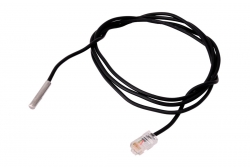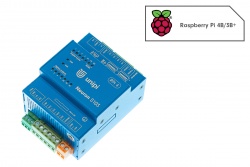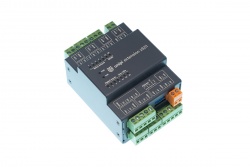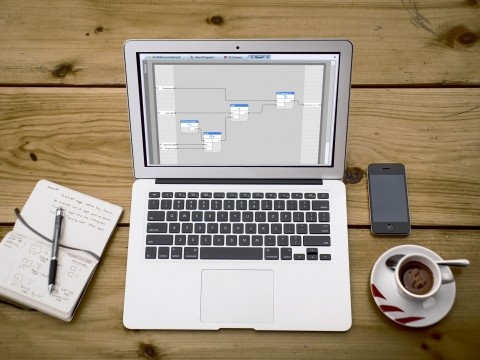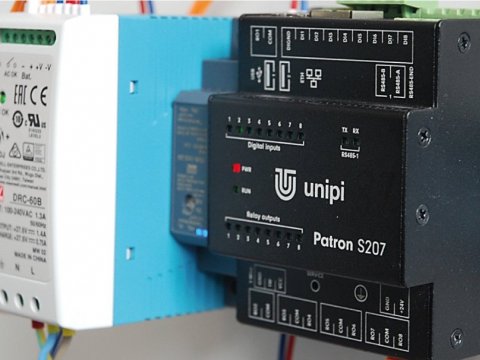
8/11/18 Even the most complex automation network will not work if all of its components are not connected and installed properly. To help you with your installation we bring you an overview of some basic tips and tricks.
Note: Bear in mind that only sufficiently qualified personnel with the knowledge of safety rules should manipulate with electric components or electrical wiring. If you are not sure you can handle the installation by yourself, use the service of an installation company. You can find a list of partner installation firms here.
1) Always use the right circuit breakers and power supplies
A circuit breaker intended to be placed into a distribution box must be rated for a combined load of all components. For the PLC itself and its accessories, a B6 circuit breaker (e.g. breaks the circuit if the current reaches or exceeds 6 A) is usually sufficient for practical use. The circuit breaker should not be rated for a higher current than needed; if such a case occurs, the circuit breaker can let through current exceeding the safe load of distribution box components, resulting in component damage or burnout.
A power supply should be chosen according to the combined power consumption of all components in the distribution box (external relays, PLCs, extension modules, etc.). In contrast to circuit breakers, the power supply should have a higher-than-needed rating; an under-rated supply could be unable to contain an inrush current when switching devices on.
Safety first: Aside from circuit breakers, a residual-current device should be also used to protect you against electrocution. This device monitors the difference between input and output current and will immediately break the circuit if a current leak is detected, saving the user from electric shock. To save both space and money we recommend to use a combined circuit breaker/residual-current device combining both roles into a single device.
2) Use external relays for switching sockets
In a regular installation, sockets are supplied directly from the distribution box and are grouped into a single circuit. Interrupting the current thus results in disabling all the sockets. To enable individual control it is necessary to connect each socket to an individual power line. Just a reminder: any modifications are required only for the phase line and zero line. The ground line is usually shared by a bridge.
Sockets can be switched either by using a contactor or an external relay. A single-contact relay will allow you to switch only a phase line; such a solution, albeit being the easiest, can result in electrocution on installations where the phase line and the zero line are switched. For safety, a twin-contact relay is strongly recommended, being able to switch both the phase and the zero.
If used for automation tasks, sockets can be switched by PLC relays. Unipi logic controllers are equipped with single-contact relays rated for 250 V∿/30 V⎓; this could tempt you to connect the socket directly to the controller. Unipi relays are however not suited for high current loads occurring when a device with a high current load (vacuum cleaners, dishwashers, electric ovens, etc.) is connected to the socket. Such loads could result in the controller’s relay burn-out and irreversible damage of the controller itself.
To prevent such accidents, we recommend using a stronger pluggable external relay switched by the controller’s relay. Aside from the controller damage prevention, you can also easily replace the relay in case of its burnout.

An example of a pluggable external relay
3) Lighting: plan for the future
Regular lighting switches work in binary on/off mode and do not require high voltage or current, allowing you to use cabling with a smaller diameter. A regular twisted pair cable with a diameter of 0.5 mm2, connected directly to the controller’s digital input, is entirely sufficient, but also severely limits any potential expansions of the system, as a twisted pair cannot be used to connect any additional switches. If you plan to receive signals from more than a single switch, you need to install a sufficient number of cables. The required number is equal to the number of switches plus the power supply.
You should also plan sufficiently in advance; a recommended time span is 10 - 20 years. To gain a comfortable reserve for future expansions, we recommend using a conventional 8-wire UTP cable, giving you enough wires for connecting a whole set of switches. The UTP cable is also able to transmit data either from RS485 interfaces or from Ethernet ports, allowing you to use switches with additional functionality.
4) Mind the interference
Data lines are prone to electromagnetic interference, causing a loss of data and interruptions of the device-PLC communication. The interference is most often caused by close proximity of the data cable to power lines but can be also present in the data cable is placed in the vicinity of high-power devices such as large power inverters. The most effective interference reduction method is the use of shielded cables such as FTP or STP. These cables are easily available and their cost is only marginally higher than unshielded UTP cables.

An example of a shielded 8-wire FTP cable
The interference can be also caused by exceeding the maximum cable length. This issue can be prevented by meeting the requirements for maximum cable length for each respective data bus. These requirements may vary depending on the interface chosen, ie. the RS485 serial line can be used at distances more than 100 meters with no significant troubles, while the 1-Wire bus will suffer a strong interference with such length.
5) Use the S0 output for quantity measurements
Most of the modern quantity meters are usually using pulse signals for collecting data. Each pulse corresponds to a certain amount of medium flow, such as 0.5- or 0.5 liters of water per pulse. The meters are usually provided with a tamper-proof seal, but that does not mean you cannot use your own way of monitoring the consumption. For this purpose, an S0 output can be used. This output, which should be present on every metering device according to DIN 63864 standard, can be connected directly to a digital input of a controller, which will allow you to monitor the consumption through pulse counting. This method can provide you with accurate data of long-term consumption but does not allow you to calculate current real-time consumption.
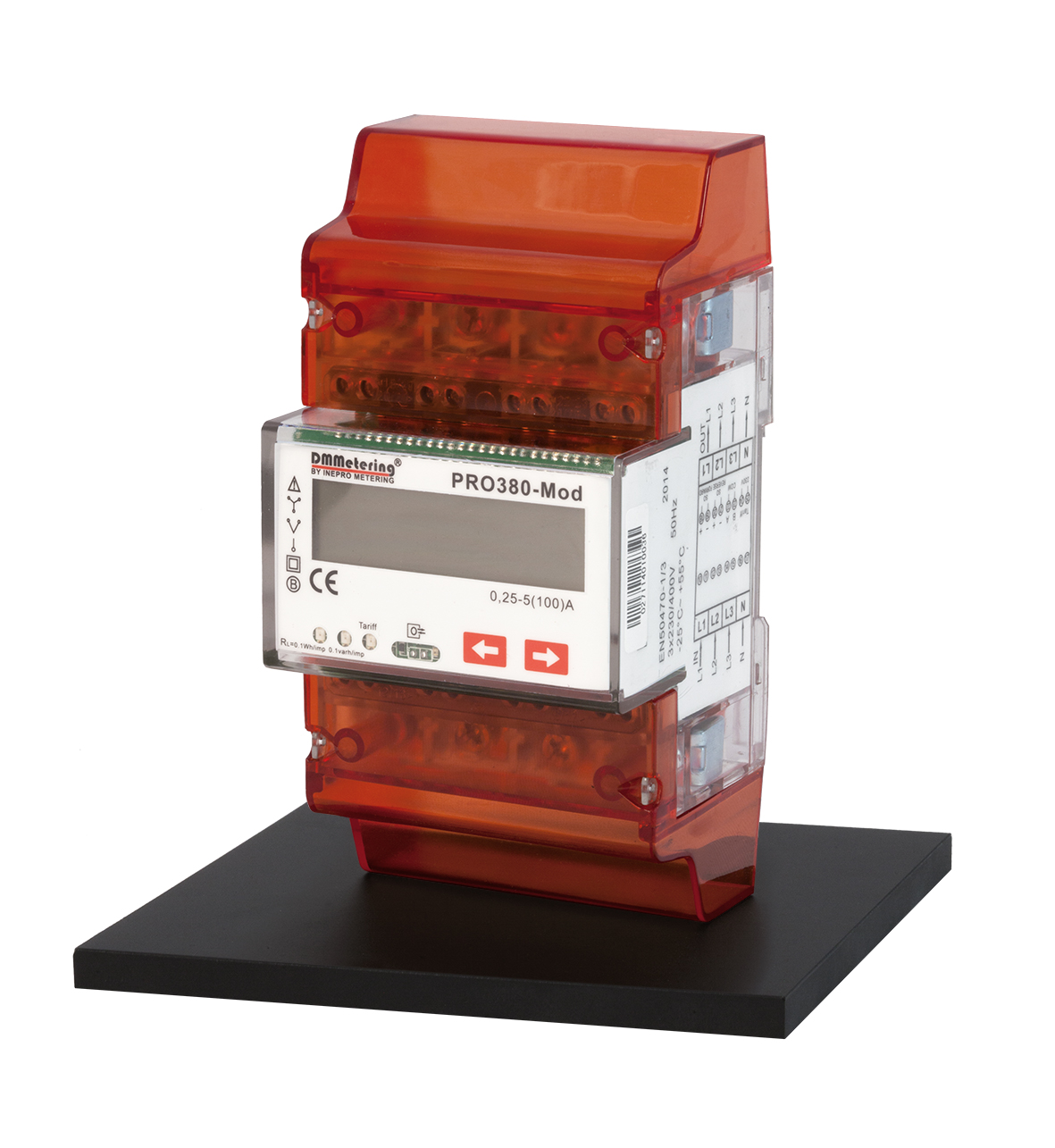
PRO380 energy meter with the S0 output
When using Unipi controllers, the Mervis software, Unipi’s main supported software platform for PLC programming, contains several function blocks designed for calculating the current consumption or cumulative consumption. These values can be then used to calculate energy costs, represent actual consumption, or for creating a system that monitors the energy price and switches the current on only during a low tariff.
6) Mind the correct connection method for serial lines
In the field of automation, you will sooner or later encounter one of the serial lines providing a communication interface between two or more devices. Unipi controllers and their accessories feature RS485 and RS232 serial lines as well as the 1-Wire low-power bus. Each of them is suited for different applications while sharing some basic connection practices and methods.
The RS485 interface uses a two-wire connection, allowing you to connect a large number of devices to a single line (provided they shares a single communication protocol). The interface is usually used to communicate with devices such as pumps, energy meters, gateways, or touchscreen control panels. During the installation, bear in mind that the RS485 cannot be used in a tree-like topology (e.g. the mainline with branches running to each connected device). It is necessary to connect all devices in a cascade, e.g. interrupt the line for each device, connect it and then add a connection to the next device in line. Regarding the cabling itself, we recommend using a standard twisted-pair cable; for longer lines, a shielded twisted pair should be used.
The tree-like topology cannot be used with the 1-Wire bus as well. This bus requires at least two cables with one serving as a ground and the second transmitting the data. This arrangement, however, prevents any future expansions, Unipi-offered 1-Wire devices and controllers thus utilize a four-wire connection method, leaving you a pair of free cables for connecting any additional devices.
The third serial interface on Unipi controllers is the RS232; this interface has all its parameters set by the corresponding standard.

Příklad správného zapojení více rozšiřujících modulů k jednomu kontroléru skrze linku RS485.
7) Analogue or digital thermometers?
Regarding thermometers in automation, either digital or analog devices are available. Digital thermometers communicate by using voltage pulses or through a serial interface. The Unipi catalog contains several simple 1-Wire sensors, but you can also find some more complex sensors with additional functionality utilizing the RS485 serial line. For their connection, the above-mentioned rules of RS485 connection apply.
Regarding analog thermometers, the most frequent devices are resistance sensors. Their measurements are based on the resistance of input cables, which is in turn affected by the cable length and diameter. Unipi controllers support the three-wire resistance measuring method, eliminating the effect of input cable resistance and increasing the measuring precision. Analog thermometers are also very sensitive to interference, requiring the use of shielded cabling in order to obtain reliable results.
